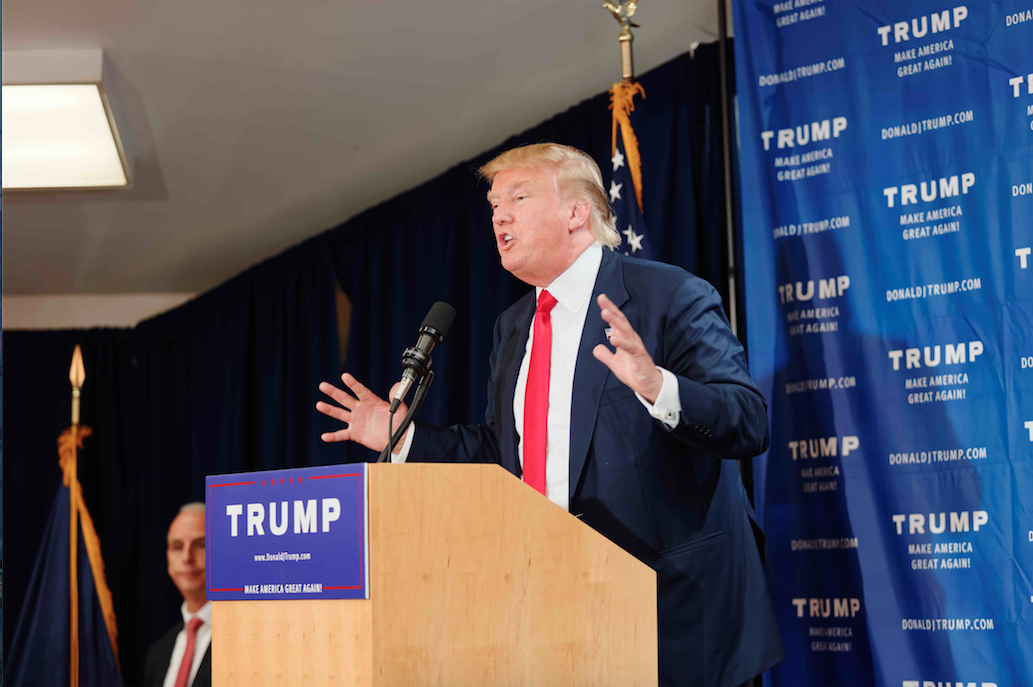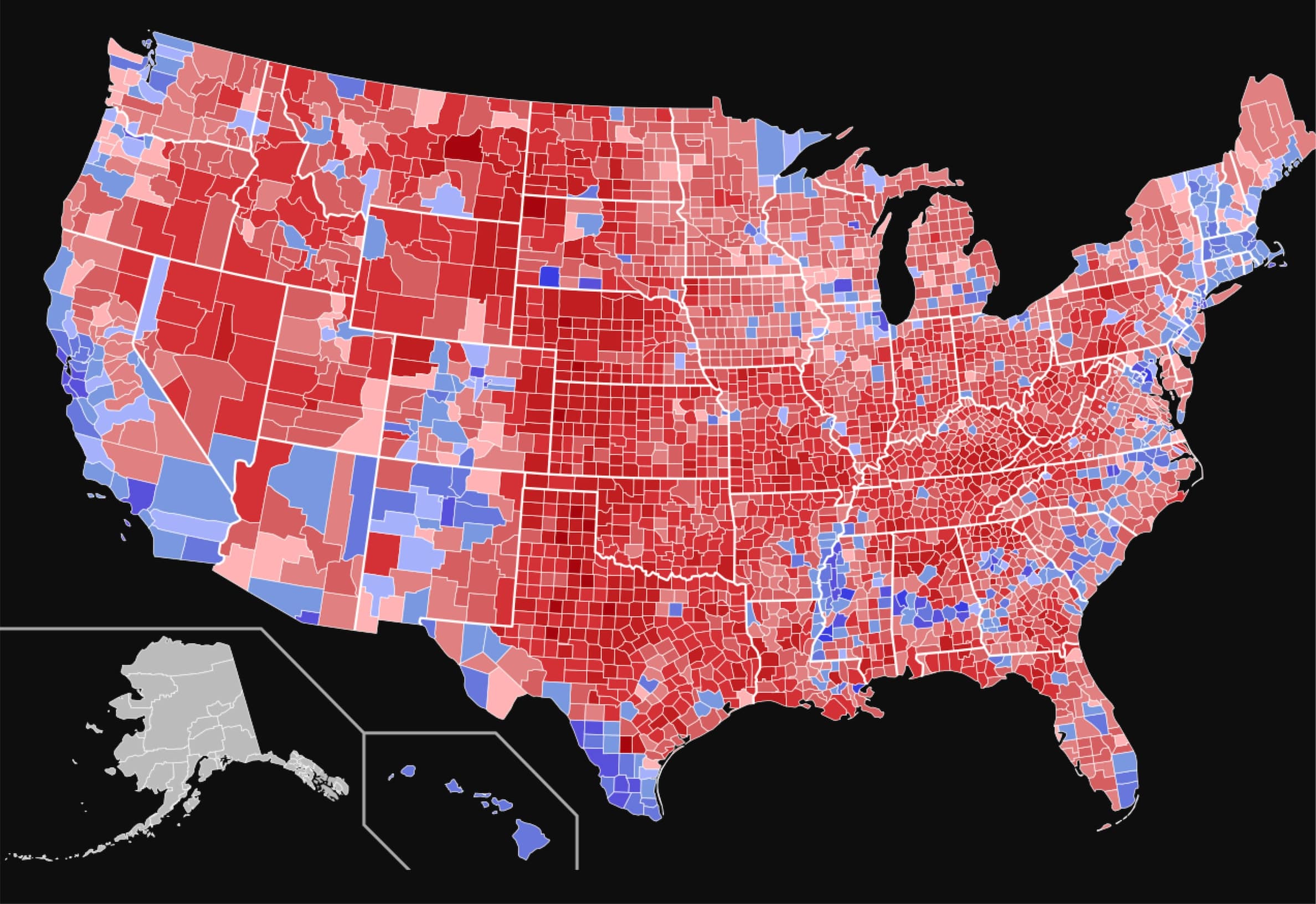To progressives and conservatives alike, the meteoric rise of Donald Trump in the wake of the Tea Party movement has been surprising, to say the least. This is a man who was once a registered Democrat, who supported universal healthcare and access to late-term abortions, opposed the 2003 invasion of Iraq, and who today opposes free trade deals and calls for large-scale spending on transportation infrastructure. His seemingly improvised list of policies and positions has led Democrats and Republicans to proclaim that “Donald Trump is No Conservative” and that his supporters are impulsively following a charlatan. Nothing could be further from the truth.
While Trump may not blend in with today’s Republican Party, the style of his arguments is classically conservative. It is no coincidence that his promise to “Make America Great Again” is itself a recycled slogan from Ronald Reagan’s 1980 presidential campaign.[1] While it’s easy to dismiss it as empty rhetoric, this is a temptation that should be resisted. Trump’s promise is a calculated political message rooted in racism and working-class white anxiety. It is the same message that right-wing populists have been peddling for as long as there has been right-wing populism.
As Corey Robin argues in The Reactionary Mind, conservatism as a philosophy is more about the preservation of hierarchy in the wake of a democratic movement from below than it is about any one set of economic arguments or particular political party.[2] Throughout America’s existence there has been an unacknowledged social contract between the ruling class and the working class. Within the working class, white men are compensated for their lack of real economic and political power with a kind of personal power over non-whites and women in private spheres. This dynamic was especially clear in the Antebellum South, where the two private spheres—the home and the workplace—combined to form the plantation. Even the poorest white Southerner carried with him a certain level of dignity due to the color of his skin. Though his government represented only the interests of the wealthiest plantation owners, the working-class white male nevertheless enjoyed an unconditionally elevated position above all non-whites.[3]
Based on this history, it is easy to see why poor white Southerners feared abolitionism as much as the political elite did. To the white laborer, the elevation of black slaves to free men felt like a loss of political power. After emancipation, members of the Southern political elite faced an immediate crisis. Industrial labor agitation in Northern cities was beginning to spread to Southern states. In particular, the 1873 collapse of the National Labor Union gave rise to the Philadelphia-born Knights of Labor, who swept through Louisiana, organizing sharecroppers to agitate for better conditions and even form their own plantations under “cooperative plans.”[4] As racial struggle became connected to class struggle in the South, plantation owners presented their anti-reconstruction position as an argument about class, leading the Republican Party to withdraw its support for Radical Reconstruction (the abolitionist congressional agenda pushed by Republicans from 1865-1877).[5] In the face of this unified threat, the federal government allowed Southern states to enact comprehensive Jim Crow legislation.[6] Buttressed by the idea that freed slaves were abusing social programs funded by white taxpayers, Jim Crow restored order to Southern society. The trope of blacks abusing welfare and entitlement programs would later be brought back to the center of our discourse by Ronald Reagan and the neoconservative revolution.
When Ronald Reagan first told his mostly fabricated story about a woman from Chicago’s all-black South Side who was arrested for welfare fraud in 1976, he was very aware of his audience.[7] At the time, the country seemed hopelessly stuck in an economic recession, and the social hegemony of whites—and of men—was jeopardized by the black civil rights and feminist movements of the ‘60s and ‘70s. The ruling class found itself threatened by a white working class determined to regain its dignity, one way or another. Whatever action was taken to restore order had to be taken quickly because the Labor Movement was beginning to work closely with black radicals and feminists to articulate a new political agenda.[8]
When Reagan said “Let’s Make America Great Again,” it was an implicit promise to disempower that black “welfare queen” from the South Side of Chicago. He made this promise to economically frustrated white men who were experiencing a loss of social power following desegregation. A new form of social control grew in its place that was defined by the criminalization of black lives and the supremacy of white culture and values. Just as Jim Crow had done, the new system of economic exploitation and racial scapegoating—under the rubric of “colorblindness”—restored race-based domination to the private spheres of the white working class.[9]
From America’s racial and economic history, a pattern emerges to explain rightwing populism. The working class is broken up into a social caste system based on the private domination of blacks, women and other marginalized social identities. When this caste system is threatened by a populist revolution, a counterrevolution engineered from above responds to restore it.
Donald Trump’s demographic is the same economically vulnerable bloc of white voters to whom Reagan appealed when he warned Americans about the black “welfare queen” from Chicago. Though the greatest target of Trump’s anger seems to be Mexican immigrants, the moral syntax of his message to the white male working class is exactly the same as that of every conservative demagogue before him: “I will restore your power.” Trump’s hawkish rhetoric about American exceptionalism and victories abroad—which Reagan also shared—follows a similar model. Working-class people experience power vicariously through the government’s military victories, just as the low-wage worker sees in the CEO an image of himself owning a small business. The common thread is an implicit social contract between ruler and ruled, where the former compensates the latter by allowing him to rule his own small, private spheres, which do not threaten the established political and economic hierarchy.
When Donald Trump says, “America doesn’t win anymore,” he is promising his low-income supporters that their half of the social contract will be fulfilled. The Left promises equal compensation as well, but in its most revolutionary moments it aims to scrap the implicit social contract altogether and create a new one on more egalitarian terms. This fundamental distinction between left- and right-wing populism is crucial to understanding Trump’s success and the apparent indifference of his Conservative base toward free-market orthodoxy.
References:
[1] “Ronald Reagan’s Classic 1980 Campaign Poster Challenges Voters,.” I Agree To See RSS2.
http://www.iagreetosee.com/portfolio/make-america-great-again/.
[2] Robin, Corey. The Reactionary Mind: Conservatism from Edmund Burke to Sarah Palin. Oxford: Oxford University Press, 2011.
[3] Wish, Harvey. George Fitzhugh, Propagandist of the Old South,. Baton Rouge, LA: Louisiana State University Press, 1943.
[4] Gourevitch, Alexander. “Labor Republicanism and the Cooperative Commonwealth.” In From Slavery to the Cooperative Commonwealth: Labor and Republican Liberty in the 19th Century. New York, NY: Cambridge University Press, 2015.
[5] Cox Richardson, Heather. “Abandoning Equality.” In To Make Men Free: A History of the Republican Party. New York, NY: Basic Books, 2014.
[6] Woodward, C. Vann. The Strange Career of Jim Crow. 3rd Rev. ed. New York, New York: Oxford University Press, 1974.
[7] Edin, Kathryn, and H. Luke Shaefer. “Ronald Reagan’s “welfare Queen” Myth: How the Gipper Kickstarted the War on the Working Poor.” Salon. September 27, 2015. Accessed September 27, 2015. http://www.salon.com/2015/09/27/ronald_reagans_welfare_queen_myth_how_the_gipper_kickstarted_the_war_on_the_working_poor/.
[8] A “Freedom Budget” for All Americans; Budgeting Our Resources, 1966-1975 to Achieve “Freedom from Want.” New York, NY: A. Philip Randolph Institute, 1966.
[9] Alexander, Michelle. The New Jim Crow: Mass Incarceration in the Age of Colorblindness. New Press, 2010.



